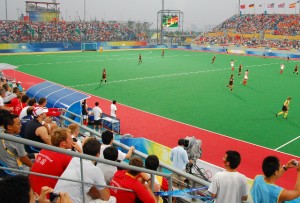Pretoria: 06 December 2020 – The South African Police Service (SAPS) has entered into a collective agreement in the Safety and Security Sectoral Bargaining Councils (SSSBC) to restructure the organization in terms of SSSBC Agreement 1 of 2020.
The agreement was entered into by SAPS as the employer and the Police and Prisons Civil Rights Union (POPCRU) and the South African Policing Union (SAPU) as the recognized trade unions within the Service.
The agreement which has been effected as of 30 November 2020, aims to ensure that the organization is able to fulfil its mandate effectively and efficiently.
The primary objective of the process which seeks to be implemented in a fair and impartial manner places a focus on service delivery, optimal utilization of senior managers, a cost-effective organizational structure that also supports the core functions of the service and the multi-tasking of skilled members.
The end goal aims to address the top heavy structure of the organization by redeploying senior managers to ensure their optimal utilisation through effective and strategic deployment from strategic framework level to the localised level of policing. The restructuring plan also seeks to enable the organization to fulfil its constitutional mandate by reducing its existing cost of the structure which have a direct impact on the compensation budget with a view of redirecting resources and capacitating policing at grass roots level.
The Implementation of the restructuring plan within the organization has resulted in the rationalisation of the SAPS structure from four (4) Deputy National Commissioners to three (3) as well as from thirteen (13) Divisions to ten(10).
The process will unfold in a phased-in approach and will cascade resources from Head Office Divisions, Provinces and Districts down to police station level and specialized units where the core functions of policing are implemented.
In an effort to scale down on the compensation budget, the SAPS has already began offering early retirement packages on members who are 55 years and older and also plans to introduce comprehensive support measures to mitigate the impact of this process on affected employees and environments.
The matching and placing of members into the new structure will be done by the committees which are being established by the National Commissioner at both National and Provincial level.
“This process will also inadvertently address the directives of National Treasury to scale down on the compensation budget. The SAPS like any other government department had an equal obligation to comply with the treasury directives, which recently resulted in a cut of 4.9 billion of the current financial year. In order to ensure that compliance by SAPS does not compromise policing in line with the “Turn around Vision” the SAPS adopted the “Migration of Resources” from the Macro functions of the organisation to production level. The turnaround vision shall therefore remain a guide for restructuring and rationalisation for the transformation of the organisation”, said the National Commissioner of the SAPS, General Khehla Sitole.
The restructuring process has also seen the introduction of the District Development Model of policing in line with the pronouncement made by His Excellency, Mr Cyril Ramaphosa to introduce these District Model of governance. In heeding this call, the SAPS is in a process to redirect more crime fighting initiatives for the organization in an integrated approach in collaboration with the relevant stakeholders to be able to fight crime more effectively and to improve service delivery at local level.







